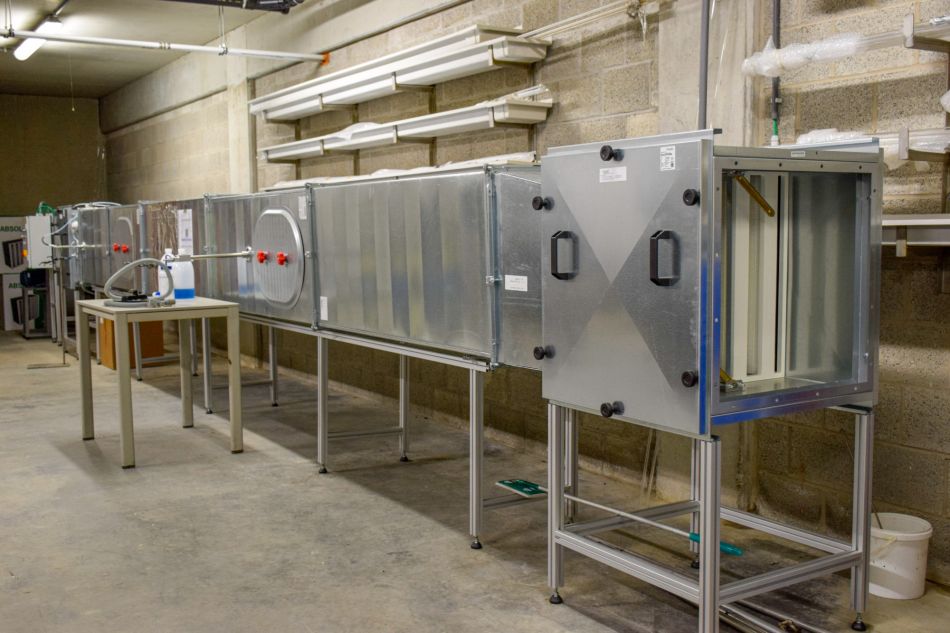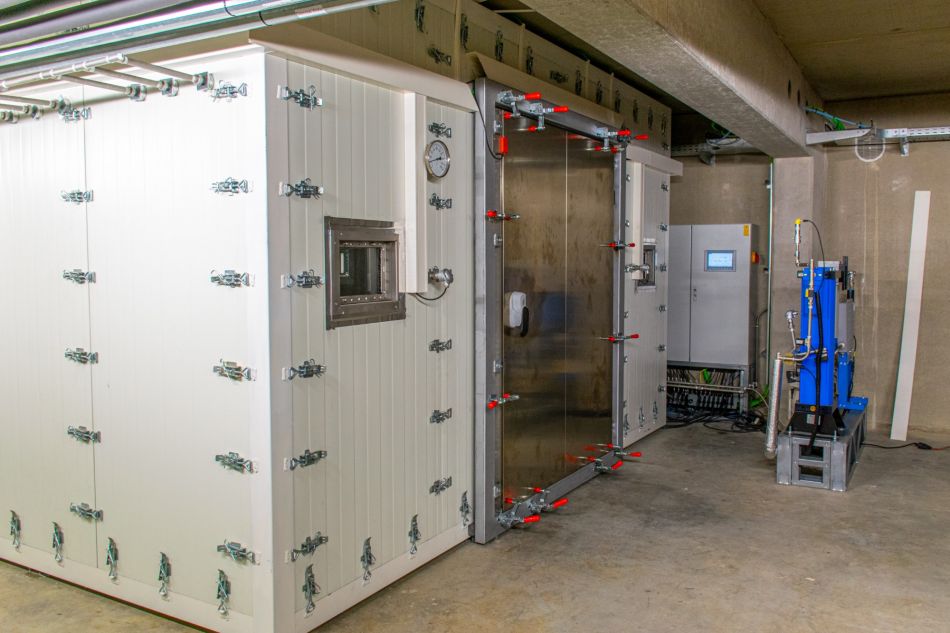Have your air purifiers professionally tested
An air purifier can reduce chemical substances, fine dust and microbiological pollution in the air. Exactly which parameters from the air are reduced depends on the device. A device that is not properly designed can form harmful by-products, so it is important to follow this up.
VITO has more than 30 years of experience in testing air purification systems in industry and in indoor air quality measurements. With the combination of these expertises, a new 30 m³ test chamber has been built to comprehensively test air purifiers.
Get in touch with our experts
Our measuring approach for air purifiers
An air purifier can be tested in the lab under ideal conditions in a 30 m³ test chamber or in a tunnel setup. This involves providing a continuous supply of air with known pollutant concentrations and determining the reduction efficiency per component and the possible by-products formed.
After an initial test in the lab, the performance of the air cleaner can be measured on site.

The tunnel setup

The 30 m³ test chamber
The standards applied in the VITO lab
- NBN EN 16846-1 – Photocatalysis — Measurement of efficiency of photocatalytic devices used for the elimination of VOC and odour in indoor air in active mode Part 1: Batch mode test method in closed chamber
- NF B44-200 – Independent air purification devices for tertiary sector and residential applications Test methods — Intrinsic performances
Other possible standards
- ANSI/AHAM AC-1-2020 - Method for Measuring Performance of Portable Household Electric Room Air Cleaners
- ANSI/AHAM AC-4-2022 – Method of Assessing the Reduction Rate of Chemical Gases by a Room Air Cleaner
- AHAM AC-5-2022 – Method for Assessing the Reduction Rate of Key Bioaerosols by Portable Air Cleaners Using an Aerobiology Test Chamber
- ANSI/ASHRAE Standard 52.2-2017 – Method of Testing General Ventilation Air-Cleaning Devices for Removal Efficiency by Particle Size
- ANSI/ASHRAE Standard 62.1-2022 – Ventilation and Acceptable Indoor Air Quality
- ANSI/ASHRAE Standard 145.1-2015 – Laboratory Test Method for Assessing the Performance of Gas-Phase Air-Cleaning Systems: Loose Granular Media
- ANSI/ASHRAE Standard 145.2-2016 – Laboratory Test Method for assessing the Performance of Gas-Phase Air-Cleaning Systems: Air-Cleaning Devices
- ANSI/ASHRAE Standard 185.1-2020 – Method of Testing UV-C Lights for Use in Air-Handling Units or Air Ducts to Inactivate Airborne Microorganisms
- ANSI/ASHRAE Standard 185.2-2020 – Method of Testing Ultraviolet Lamps for Use in HVAC&R Units or Air Ducts to Inactivate Microorganisms on Irradiated Surfaces
- IEC 63086-1 – International standard – Household and similar electrical air cleaning appliances – Methods for measuring the performance. Part 1: General requirements
- ISO 16000-36:2018 – Indoor air - part 36: Standard method for assessing the reduction rate of culturable airborne bacteria by air purifiers using a test chamber


